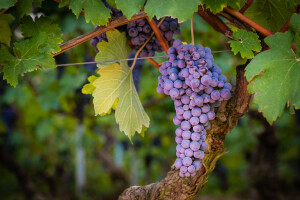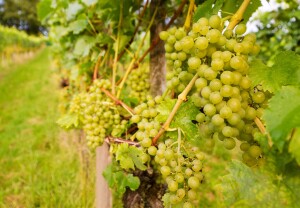It’s Official. At long last—over a year and a half after a general assembly of winemakers from the Syndicat des Bordeaux et Bordeaux Supérieur voted unanimously to allow seven new grapes to be used in the wines of the region—the INAO (France’s Institut national de l’origine et de la qualité) has spoken.
Per publication in the Journal Officiel of the Republic of France (dated March 30, 2021), six new grape varieties have been approved for use—in limited amounts—in the wines of the Bordeaux and Bordeaux Supérieur AOCs. The seventh grape—Petite Manseng—originally proposed by the Syndicat was not approved at the national level.
- The six new grapes—which will be making their way into the ground in the next few months—are as follows:
- Arinarnoa: Named after the Basque words for “light” (arin) and “wine” (arno), Arinarnoa is a Tannat X Cabernet Sauvignon cross created in Montpelier. Arinarnoa is aromatic and known for producing wines that are well-structured, tannic, and richly hued.
- Castets: A red grape variety believed to be native to Bordeaux, this grape was once widely planted throughout Southwestern France. It is considered something of a “forgotten” variety—but is known to be highly resilient and disease resistant.
- Marselan: Marselan is a Cabernet Sauvignon X Grenache cross created in 1961 by Paul Truel, who was working in Montpellier France’s Institut National de la Recherché Agronomique (INRA). Marselan is a late-ripening, highly resistant grape known for producing dark red, age-worthy wines with distinctive flavors.
- Touriga Nacional: Touriga Nacional is widely-planted and well known throughout the Iberian Peninsula—due in part, no doubt, to its use wide-spread use in Port. It is an exceptionally late-ripening variety and well-suited to warm temperatures. Touriga Nacional can provide good color, excellent structure, and complex aromatics to a red wine blend.
- Albariño: Albariño is famous for its role in the snappy white wines of Spain’s Rías Baixas DO and (as Alvarinho) in Portugal’s crisp, white versions of Vinho Verde. In the future wines of Bordeaux, it is believed that the grape’s intense aromas will be able to comfortably withstand the potential onslaught of warmer weather.
- Lilorila: Another highly aromatic white grape, Lilorila is a Baroque X Chardonnay cross. (Baroque itself is a late-ripening, vigorous white grape believed to be native to Southwest France.) Baroque is a principle grape variety of the Tursan AOC, but besides this claim-to-fame, it is planted quite sparingly (total plantings may be as low as 112 hectares/277 acres in all of France).
Research and experimentation on the new slate of grape varieties was initiated over ten years ago in an effort to lessen the long-term effects of climate change on the wine industry of Bordeaux.
The newly approved grapes have a proven ability to thrive in warmer conditions accompanied by naturally high acidity, late bud-breaking tendency (which can help alleviate problems with spring frost), late ripening, and good resistance to vine diseases. The white varieties are—in particular—intensely aromatic; this can help assuage aroma loss due to warm weather.
There are several limitations to the use of these new grape varieties, which will remain listed as “accessory varieties” on the appellations’ documentation (the Cahier des Charges). The combined acreage of the new white grape varieties may not exceed 5% of an estate’s total land area planted to white grapes. Accordingly, the total acreage of the newly approved red grape varieties may not exceed 5% of an estate’s total land area planted to red grapes. In addition, the new varieties (combined) cannot exceed 10% of the blend in any given wine—and there can be no mention of the new grape varieties anywhere on the wine’s label.
References/for more information:
- Cahier des Charges AOC Bordeaux-updated March 2021
- Cahier des Charges AOC Bordeaux Superieur-updated March 2021
- Publication re: new grapes for the Bordeaux AOC in the Journal Oficiel of France
- Publication re: new grapes for the Bordeaux Supérieur AOC in the Journal Oficiel of France
- Vins de Bordeaux June 2019 press release re climate change in Bordeaux
- Robinson, Jancis, Julia Harding, and José Vouillamoz: Wine Grapes. New York, 2012: Harper Collins Publishers
- https://wineindustryadvisor.com/2021/01/26/bordeaux-introduce-six-grape-varieties
Post authored by Jane A. Nickles…your blog administrator: jnickles@societyofwineeducators.org

